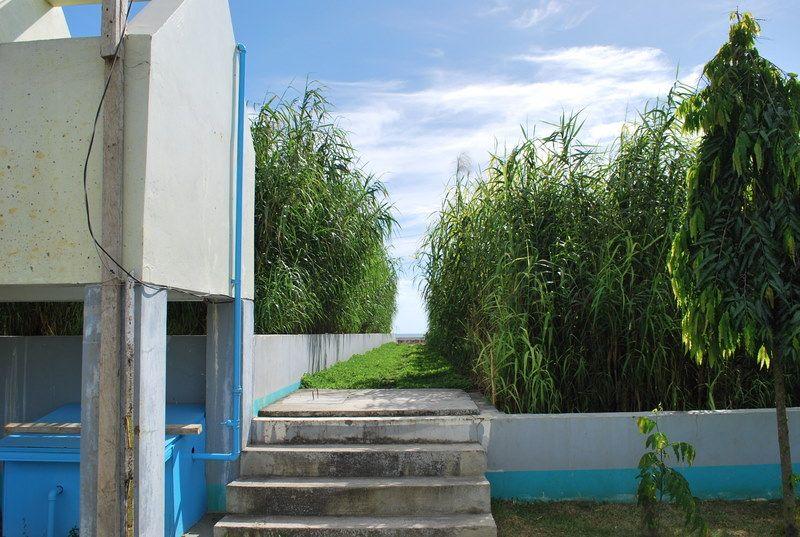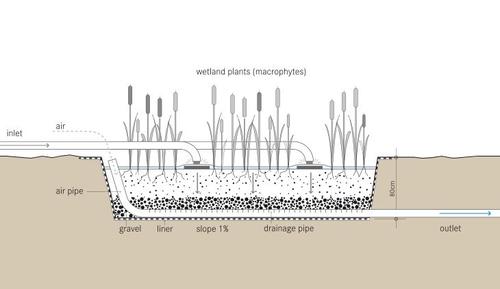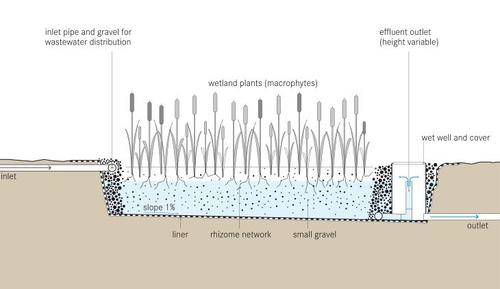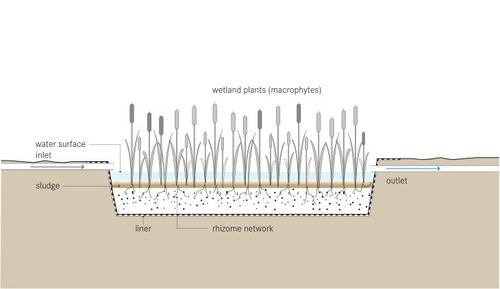Constructed wetlands
Constructed wetlands lie in-between lagoons and land based treatment systems. They are based on natural wetlands, which act as a water filter and purifier using natural physical, chemical, and biological processes. A constructed wetland consists of a gravel bed in which wetland species, such as reeds bulrush and cattails, are planted. Wastewater, usually after the settling of solids, passes through the gravel bed. The flow of wastewater can be either surface or sub-surface. The bacteria that are attached to the surfaces of the bed and plant roots degrade organic substances. Wetland plants take up nutrients (nitrogen and phosphorus) when water residence time is long enough. Long-term nutrient removal requires harvesting of the plants. They are suitable for treating wastewater from industries, small communities, stormwater runoff from urban and agricultural areas, and acid mine drainage. Significant water quality improvements can be achieved. Constructed wetlands are particularly of interest in low-income areas as they are simple to construct, operate and maintain, usually by trained local people. This keeps the both the capital and operating costs low. (UNEP 2000 & EPA 2004)

(Boorsma, J. from SuSanA Secretariat 2009)


